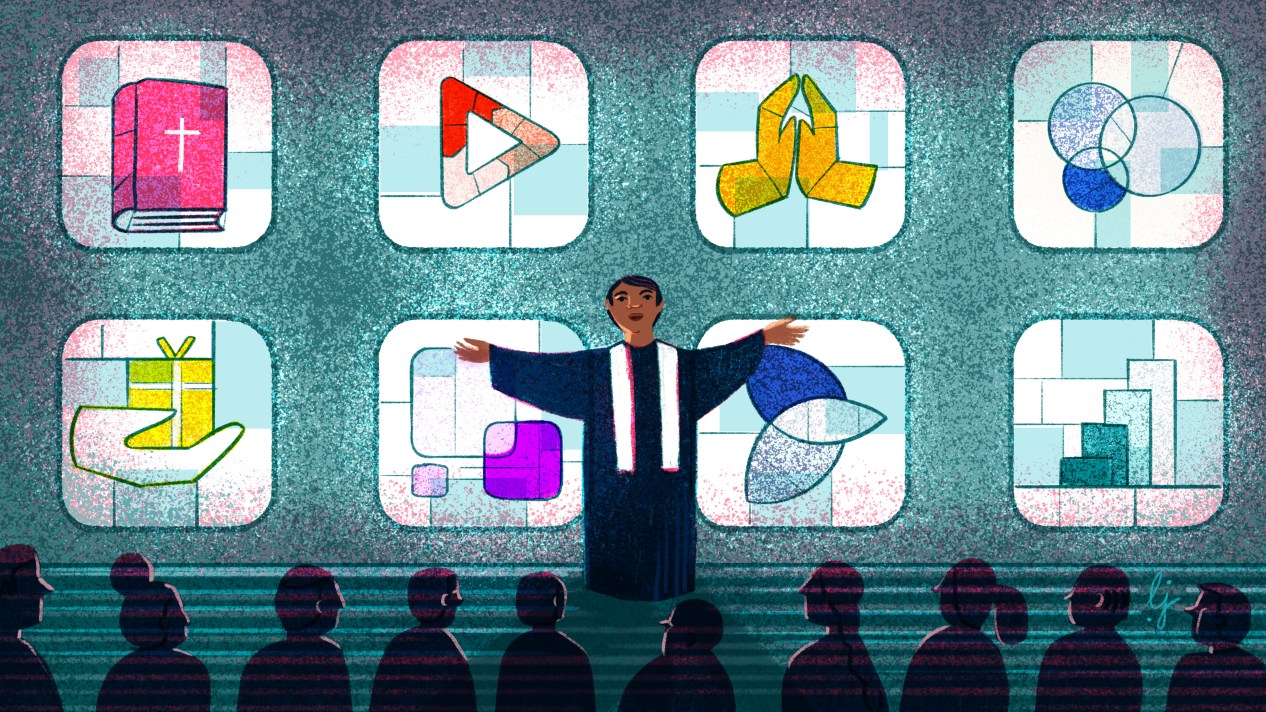Conversations between pastors and their congregants used to take place in church lobbies, around potluck tables, or in passing outside of Sunday school classrooms. Now, these connections regularly occur in digital spaces.
“We still have people who joined us [virtually] during the pandemic, and we've never met in person,” explains Suzanna Mason, communications and systems director of Bethany Presbyterian Church in Seattle, Washington. Even now, the church has “a hundred screens a week” joining in for Sunday services.
Many church leaders are realizing the massive benefits of online church coincide with a new challenge: pastors feel as though they are shepherding two separate churches. How do they juggle various outreach tools, engagement opportunities, and events for both physical and digital congregations–simultaneously?
Leaders like Mason have found that comprehensive church management technology empowers them to meet people right where they are, whether that’s in the church parking lot or a Google survey. Rather than adding more administrative tasks to their plates, this software brings physical and online congregations together by supporting key areas of ministry like giving, community, and volunteering.
Growth in Giving
While new software may seem unnecessary or overwhelming, the information and reports available in these programs can profoundly shape your ministry and enhance the act of giving for your congregants. By using these systems to analyze giving patterns, you can identify patterns or changes in the lives of your congregants, which in turn means finding better opportunities for care and connection based on actual needs.
If a regular giver is no longer contributing, that may signal a disruption in their income or another struggle in their personal life. If there’s a congregational move toward special-interest giving, that could indicate that your church wants to see exactly how and where their money is spent. Giving data is more than a spreadsheet—it’s a pastoral invitation to care well for your congregants.
Digital giving also offers a much easier, more direct way for both in-person and online communities to give. People can set up recurring donations or give on-demand from their church’s app during a Sunday service, whether they are sitting in a pew or viewing a live stream from their living room.
Mason says that digital giving solutions improved the success of special campaigns, like their annual holiday pie fundraiser. In the past, people had to write a check or bring cash to purchase a pie. Now, a digital order form offers options for payments online, via text, or with a QR code.
“It made a huge difference in participation,” said Mason. After adopting this giving technology, Bethany Presbyterian had their largest holiday pie fundraiser to date, only surpassed by their most recent campaign for hanging flower baskets–which was also made possible by the digital registration and payment system.
Cultivating Community
Not only do digital systems allow you to better understand and enhance your church’s giving, but they also enable pastors to reach the right people with the right information at the right time, whether that’s sending sign-up forms for summer camps or announcing new times for the women’s Bible study.
Barbara Utt, administrator at Northwood Christian Church in Springfield, Oregon, notes that the church’s software provides cross-reference reports that instantly show markers of engagement that include giving, small group attendance, and volunteering. These reports allow churches to honor their congregants' time and attention by sending them tailored emails based on their demographics and interests. Rather than distributing the mass messages to everyone, which can lead to congregants missing relevant announcements buried in large newsletters, software reporting and messaging features ease the process by giving individuals the resources they want and need.
“At the end of the day, it’s not about being big brother, tracking everything,” says John Broadhead, senior executive pastor at Village Church in Surrey, British Columbia. “It’s about [a congregant’s] discipleship journey, and determining how you can guide them to the next step.”
Vitality in Volunteering
Though many are slowly making their way back to in-person services after months or years at home, they aren’t necessarily rushing back into service opportunities. On the other hand, new online congregants, who never set foot inside the physical church building, may be eager to serve but unclear on how they can contribute.
A comprehensive technology solution like Pushpay helps churches communicate effectively about volunteer needs and opportunities. For churches with physical and online congregants, this technology can easily feature both in-person service opportunities, like working with a children’s class, and remote opportunities, like chatting with online visitors or sending follow-up emails to new attendees.
Broadhead notes the efficiency of having one software that can text volunteers with reminders, request confirmations, and track volunteering history. The ability to track participation also gives pastors a stronger sense of a congregant’s engagement. For example, if someone who used to serve on a regular basis is no longer doing so, that lapse can trigger a notification that’s sent to a pastor encouraging them to check on that individual.
Insights into Your Congregation
As church leaders aim to serve their physical and online congregations alike, some may feel overwhelmed or unsure of where to start. That’s where Pushpay comes in: this church management system offers a full suite of solutions that includes an online giving platform, email communications, volunteer management, and livestreaming. Pushpay empowers church leaders to shepherd their physical and online congregations with fewer silos and greater effectiveness.
Pushpay makes it possible to see not just screens, but souls; not only data but discipleship.
Posted


